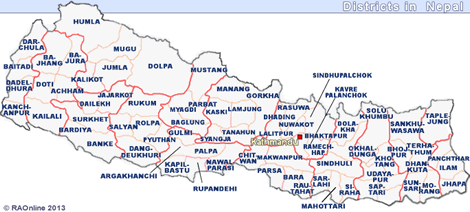May
2004
| Kaski:
Maoists attacked Tourist Facilities in Ghandruk (May 2004) |
The
news of the murders of two prominent tourism entrepreneurs in Ghandruk
by Maoists has sent Pokhara into deep gloom. Ghandruk is an important trekking
stop on the trails to Ghorepani and Annapurna Base Camp and used to house
the headquarters of the Annapurna Conservation Area Project (ACAP), which
was destroyed by Maoists two years ago.
Maoists
took five prominent Ghandruk hoteliers hostage. They locked two lodges
and transferred guests from one tea house to another. Then came the news
that the Maoists had shot dead two of the hostages. The rebels told
villagers not to leave their houses and trekkers are bypassing Ghandruk
for now.
April
2004
| US
courts Nepal as anti-terror partner |
The
army is to get 20,000 American M16 rifles to update its firepower. The
Royal Nepalese Army (RNA) is long on tradition, but short of modern-day
weaponry. Most of its rifles are over 30 years old and notoriously unreliable
in combat.
Many
of the knives look like they belong in a souvenir shop rather than on the
battlefield. So the administration of US President George W Bush is investing
$17m of military aid in the RNA, mainly to pay for about 20,000 M16 rifles
and night vision equipment. The aim is to transform this 70,000-strong
force from a parade ground-based army into a modern-day, counter-insurgency
unit.
April
2004
| UN-interested
in mediation |
As
conflict between the security forces and Maoist rebels intensifies in Nepal,
the voice for peace is also getting stronger. Joining the peace chorus
last week was UN Secretary General Kofi Annan, who not only called for
the end of the conflict, but also offered help to mediate. The offer, however,
has sparked a debate in Nepal about the whether the UN can, or should,
play such a role.
April
2004
| Maoist
conflict: Victimised victims |
Last
year, Ram Gopal Tamauli was shot and stabbed by a group of Maoists after
he refused to join their movement in a village in Banke. He tried to argue
that he did not believe in violence, but was attacked with swords and guns.
Emboldened by his courage, hundreds of villagers pounced on the Maoists
a
March
2004
| Myagdi:
Report from the Beni battlefield |
The
stench of death is overpowering in Myagdi, and the country is sucked into
a vortex of violence.
It
is the morning after in Beni and a scene of utter devastation. The police
station is a blackened wreck. The barbed wire had been clipped away and
the perimeter wall blasted open at several points. Sandbags at the sentry
posts are torn to shreds. Near the army base, a woman is washing the bloodstain
from the steps outside her shop, while her daughter looks on.
March
2004
SECRETARY-GENERAL,
DISTURBED BY ESCALATION OF FIGHTING IN NEPAL,
APPEALS
FOR RESUMPTION OF PEACE PROCESS |
 |
March
22, 2004 - Statement was issued by the Spokesman for UN Secretary-General
Kofi Annan |
 |
 |
The
Secretary-General is disturbed by the recent escalation of fighting in
Nepal, where the continued instability and conflict is having an increasingly
devastating impact on the lives of ordinary people. Civilian casualties
and serious human rights violations are a routine occurrence, and the country's
economic and social development is being seriously hampered.
The
Secretary-General does not believe there is a military solution to the
conflict. He appeals to His Majesty's Government of Nepal and the
Communist Party of Nepal (Maoist) to take immediate steps to end the fighting
and resume the peace process with the participation of all political and
civil forces in the country.
The
Secretary-General continues to be available to assist the search for a
solution in any manner the parties consider useful. |
 |
March
2004
| The
Maoist strategy: Isolating Pokhara |
The
Maoist blockade of more than a dozen districts of central Nepal couldn't
have come at a worse time for Pokhara. At the height of the trekking season,
hundreds of tourists bound for the Annapurna circuit or taking buses to
Kathmandu are stranded. For this tourist-dependant town, when visitor numbers
go down everyone from vegetable farmers to paragliding companies are hit.
March
2004
| Maoist
plan of three-day siege of Myagdi HQ |
The
Maoists would have captured Beni, the Myagdi district headquarters, for
three days and nights, to pressurise the government, had the security forces
not fought well continuously for 12 hours, a seized video cassette has
revealed.
top
|






